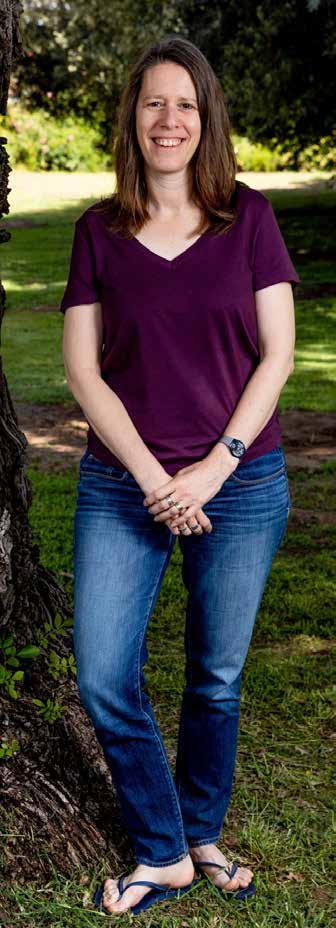
4 minute read
AUSTFHU Year book 2022/2023
Ask the Expert: The UN Sustainable Development Goals
By Devora M. Liss
Advertisement
Prof. Yael Mishael is academic head of Hebrew University’s Advanced School of Environmental Studies and director of Hebrew University’s newly launched Center for Sustainability. Her own research focuses on developing organic-inorganic composite materials used for environmental and agriculture purposes, including filtering wastewater, ensuring that harmful pollutants are not transferred to crops. Previously, she headed the Department of Soil and Water Sciences at the Robert H. Smith Faculty of Agriculture, Food and Environment. With such an impressive résumé, we asked her to explain the United Nations Sustainable Development Goals (SDGs) to our readers.
Q: What are the United Nations Sustainable Development Goals (SDGs), and why do they matter?
The United Nations Sustainable Development Goals are 17 broad, interconnected areas that humankind must address to ensure the healthy, sustainable, and equitable future of our species, planet, and ecosystems. As the most significant worldwide governing body, the United Nations has done a great service by creating a framework and common language for advancing sustainability.
What is the history behind the SDGs?
It all began in 1987, with the United Nations report, Our Common Future, which served as the catalyst for the 1992 Earth Summit in Rio de Janeiro, which, in turn, led to a number of global climate agreements – including the Kyoto Protocol in 1997 and the Paris Agreement in 2016.
In 2012, twenty years after that first Earth Summit, the United Nations returned to Rio de Janeiro for the Conference on Sustainable Development, where the SDGs were developed. In 2015, they were unanimously adopted by the General Assembly.
How is Hebrew University working to meet the SDGs?
Hebrew University President Prof. Asher Cohen displayed great vision and leadership in spearheading the establishment of the Center for Sustainability, creating a joint framework for researchers from across the University and
enabling interdisciplinary projects, four of which have already been funded.
Hebrew University researchers are already conducting SDG-related research. A few examples: Prof. Lioz Etgar is addressing SDG 7 (Affordable and Clean Energy) by developing better solar panels, Dr. Yael Mandelik is addressing SDG 15 (Life on Land) by studying insect pollinators, ecosystem services, and biodiversity, and the Herrmann Institute of Earth Sciences is addressing SDG 13 (Climate Action) through A Degree and a Half, an evidence-based lecture series on climate science and climate change shared over YouTube.
One SDG stands out – 17: Partnerships for the Goals . Could you discuss Hebrew University’s partnerships?
This goal is crucial, directing “how” and not just “what” needs to be done. Hebrew University is constantly fostering external partnerships, collaborating with the government, industry, and civic society to advance SDG-related projects. We
are in the process of signing a contract, through Yissum, with a major venture capital fund that is investing in green technology being developed at Hebrew University. We are also working with the Jerusalem municipality, the Ministry of Environmental Protection, and the Bloomfield Science Museum, training kids to monitor air quality and shade across the city over time.
But we’re looking even further. For example, there are now global SDG rankings of colleges and universities. To compete, you must meet SDG 17. To this end, I recently participated in a delegation organized by the British Council for the heads of university sustainability centers from Israel and the United Kingdom.
How should our readers think about the SDGs? How do these goals affect our daily lives?
“Sustainability” means different things to different people, but ultimately, each of us is responsible for the decisions we make: do we
take a disposable cup or pack a reusable one? When considering the Giant Pacific Garbage Patch, suddenly, a small decision has a global impact. Do you want to be part of the problem, or part of the solution?
In addition, reducing emissions and capturing carbon dioxide (CO2) are both critical for the healthy future of our planet. Yet neither are an explicit SDG, but rather embedded in SDG 7 (Affordable and Clean Energy), SDG 9 (Industry, Innovation and Infrastructure), SDG 11 (Sustainable Cities and Communities), and others. Ultimately, the reduction of CO2 in our atmosphere will depend on governmental policies. As a research powerhouse, Hebrew University is already significantly contributing the research and technologies that will enable Israel, and the world, to successfully meet the SDGs.


This article originally appeared in the Hebrew University’s Scopus magazine, and is reprinted with permission from the Hebrew University.










